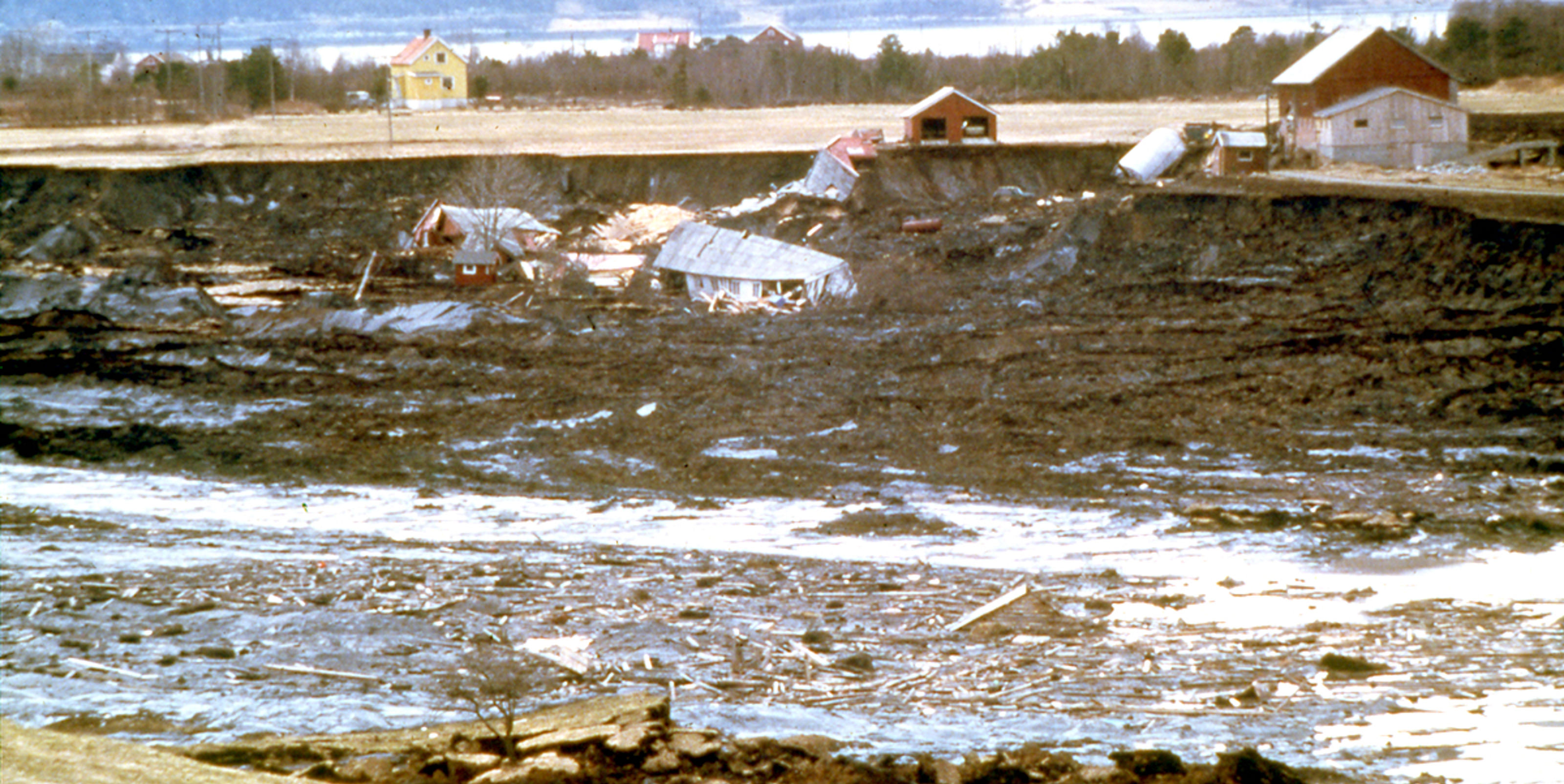What is quick clay?
Quick clay is the term used for a special type of clay which totally collapses and flows like a liquid when overloaded. Quick clay is found primarily in Norway and Sweden, but also exists in Finland, Russia, Canada and Alaska.

Quick clay is found below the marine level (the present elevation of where the sea level was at end of the last ice age) in Scandinavia. The Scandinavian peninsula (Norway and Sweden) was covered with an ice layer of about 3 000 meters (about 20 000 years ago).
When the ice started to melt, the small clay particles flowed with the water and sedimented in the marine environment in salt water along the sea shore. The salt made the clay particles form a highly unstable structure.
As the ice melted, the land formation slowly rose due to the loss of wight from the ice. Parts of the area with clay, which was situated under water, now was elevated above the sea water level.
Today the marine boarder is at about 220 - 300 meters above sea level. Over the years after the land elevation after the last ice age, the salt in the clay layers has been washed out due to the fresh water in the ground. When the salt, which caused the electrostatic bindings in the clay, was washed away, the strength characteristics of the clay were drastically changed.
What is Quick Clay? (In Norwegian)
If such clay is overloaded, the clay structure (similar to a house of cards) will suddenly collapse. Such clay is denoted as "quick". If the clay is exposed to sustained loading, is subjected to remoulding from natural causes or by man-made action, the clay masses will suddenly transform into a floating liquid in its own pore water.
Quick clay slides can propagate very quickly backwards (retrogressively) over large areas, and the slide debris will float over considerable distances.
The quick clay slide in Rissa (north of Trondheim in central part of Norway), in April 1978 was filmed while in action. Unique pictures and film were taken during an actual quick clay slide, and one can see dwellings and farm houses float along the clay "river" before being demolished by the enormous masses and forces.
NGI has made a video describing the phenomenon of quick clay, where these film sequences are shown from the Rissa slide.